LIST OF ASSUMPTIONSNorth America Ceiling Fan Market SIZE ESTIMATES & FORECAST, BY TYPE, 2019-2035 (USD Billions)North America Ceiling Fan Market SIZE ESTIMATES & FORECAST, BY MATERIAL, 2019-2035 (USD Billions)North America Ceiling Fan Market SIZE ESTIMATES & FORECAST, BY MOUNTING TYPE, 2019-2035 (USD Billions)North America Ceiling Fan Market SIZE ESTIMATES & FORECAST, BY END USE, 2019-2035 (USD Billions)North America Ceiling Fan Market SIZE ESTIMATES & FORECAST, BY REGIONAL, 2019-2035 (USD Billions)US Ceiling Fan Market SIZE ESTIMATES & FORECAST, BY TYPE, 2019-2035 (USD Billions)US Ceiling Fan Market SIZE ESTIMATES & FORECAST, BY MATERIAL, 2019-2035 (USD Billions)US Ceiling Fan Market SIZE ESTIMATES & FORECAST, BY MOUNTING TYPE, 2019-2035 (USD Billions)US Ceiling Fan Market SIZE ESTIMATES & FORECAST, BY END USE, 2019-2035 (USD Billions)US Ceiling Fan Market SIZE ESTIMATES & FORECAST, BY REGIONAL, 2019-2035 (USD Billions)Canada Ceiling Fan Market SIZE ESTIMATES & FORECAST, BY TYPE, 2019-2035 (USD Billions)Canada Ceiling Fan Market SIZE ESTIMATES & FORECAST, BY MATERIAL, 2019-2035 (USD Billions)Canada Ceiling Fan Market SIZE ESTIMATES & FORECAST, BY MOUNTING TYPE, 2019-2035 (USD Billions)Canada Ceiling Fan Market SIZE ESTIMATES & FORECAST, BY END USE, 2019-2035 (USD Billions)Canada Ceiling Fan Market SIZE ESTIMATES & FORECAST, BY REGIONAL, 2019-2035 (USD Billions)Europe Ceiling Fan Market SIZE ESTIMATES & FORECAST, BY TYPE, 2019-2035 (USD Billions)Europe Ceiling Fan Market SIZE ESTIMATES & FORECAST, BY MATERIAL, 2019-2035 (USD Billions)Europe Ceiling Fan Market SIZE ESTIMATES & FORECAST, BY MOUNTING TYPE, 2019-2035 (USD Billions)Europe Ceiling Fan Market SIZE ESTIMATES & FORECAST, BY END USE, 2019-2035 (USD Billions)Europe Ceiling Fan Market SIZE ESTIMATES & FORECAST, BY REGIONAL, 2019-2035 (USD Billions)Germany Ceiling Fan Market SIZE ESTIMATES & FORECAST, BY TYPE, 2019-2035 (USD Billions)Germany Ceiling Fan Market SIZE ESTIMATES & FORECAST, BY MATERIAL, 2019-2035 (USD Billions)Germany Ceiling Fan Market SIZE ESTIMATES & FORECAST, BY MOUNTING TYPE, 2019-2035 (USD Billions)Germany Ceiling Fan Market SIZE ESTIMATES & FORECAST, BY END USE, 2019-2035 (USD Billions)Germany Ceiling Fan Market SIZE ESTIMATES & FORECAST, BY REGIONAL, 2019-2035 (USD Billions)UK Ceiling Fan Market SIZE ESTIMATES & FORECAST, BY TYPE, 2019-2035 (USD Billions)UK Ceiling Fan Market SIZE ESTIMATES & FORECAST, BY MATERIAL, 2019-2035 (USD Billions)UK Ceiling Fan Market SIZE ESTIMATES & FORECAST, BY MOUNTING TYPE, 2019-2035 (USD Billions)UK Ceiling Fan Market SIZE ESTIMATES & FORECAST, BY END USE, 2019-2035 (USD Billions)UK Ceiling Fan Market SIZE ESTIMATES & FORECAST, BY REGIONAL, 2019-2035 (USD Billions)France Ceiling Fan Market SIZE ESTIMATES & FORECAST, BY TYPE, 2019-2035 (USD Billions)France Ceiling Fan Market SIZE ESTIMATES & FORECAST, BY MATERIAL, 2019-2035 (USD Billions)France Ceiling Fan Market SIZE ESTIMATES & FORECAST, BY MOUNTING TYPE, 2019-2035 (USD Billions)France Ceiling Fan Market SIZE ESTIMATES & FORECAST, BY END USE, 2019-2035 (USD Billions)France Ceiling Fan Market SIZE ESTIMATES & FORECAST, BY REGIONAL, 2019-2035 (USD Billions)Russia Ceiling Fan Market SIZE ESTIMATES & FORECAST, BY TYPE, 2019-2035 (USD Billions)Russia Ceiling Fan Market SIZE ESTIMATES & FORECAST, BY MATERIAL, 2019-2035 (USD Billions)Russia Ceiling Fan Market SIZE ESTIMATES & FORECAST, BY MOUNTING TYPE, 2019-2035 (USD Billions)Russia Ceiling Fan Market SIZE ESTIMATES & FORECAST, BY END USE, 2019-2035 (USD Billions)Russia Ceiling Fan Market SIZE ESTIMATES & FORECAST, BY REGIONAL, 2019-2035 (USD Billions)Italy Ceiling Fan Market SIZE ESTIMATES & FORECAST, BY TYPE, 2019-2035 (USD Billions)Italy Ceiling Fan Market SIZE ESTIMATES & FORECAST, BY MATERIAL, 2019-2035 (USD Billions)Italy Ceiling Fan Market SIZE ESTIMATES & FORECAST, BY MOUNTING TYPE, 2019-2035 (USD Billions)Italy Ceiling Fan Market SIZE ESTIMATES & FORECAST, BY END USE, 2019-2035 (USD Billions)Italy Ceiling Fan Market SIZE ESTIMATES & FORECAST, BY REGIONAL, 2019-2035 (USD Billions)Spain Ceiling Fan Market SIZE ESTIMATES & FORECAST, BY TYPE, 2019-2035 (USD Billions)Spain Ceiling Fan Market SIZE ESTIMATES & FORECAST, BY MATERIAL, 2019-2035 (USD Billions)Spain Ceiling Fan Market SIZE ESTIMATES & FORECAST, BY MOUNTING TYPE, 2019-2035 (USD Billions)Spain Ceiling Fan Market SIZE ESTIMATES & FORECAST, BY END USE, 2019-2035 (USD Billions)Spain Ceiling Fan Market SIZE ESTIMATES & FORECAST, BY REGIONAL, 2019-2035 (USD Billions)Rest of Europe Ceiling Fan Market SIZE ESTIMATES & FORECAST, BY TYPE, 2019-2035 (USD Billions)Rest of Europe Ceiling Fan Market SIZE ESTIMATES & FORECAST, BY MATERIAL, 2019-2035 (USD Billions)Rest of Europe Ceiling Fan Market SIZE ESTIMATES & FORECAST, BY MOUNTING TYPE, 2019-2035 (USD Billions)Rest of Europe Ceiling Fan Market SIZE ESTIMATES & FORECAST, BY END USE, 2019-2035 (USD Billions)Rest of Europe Ceiling Fan Market SIZE ESTIMATES & FORECAST, BY REGIONAL, 2019-2035 (USD Billions)APAC Ceiling Fan Market SIZE ESTIMATES & FORECAST, BY TYPE, 2019-2035 (USD Billions)APAC Ceiling Fan Market SIZE ESTIMATES & FORECAST, BY MATERIAL, 2019-2035 (USD Billions)APAC Ceiling Fan Market SIZE ESTIMATES & FORECAST, BY MOUNTING TYPE, 2019-2035 (USD Billions)APAC Ceiling Fan Market SIZE ESTIMATES & FORECAST, BY END USE, 2019-2035 (USD Billions)APAC Ceiling Fan Market SIZE ESTIMATES & FORECAST, BY REGIONAL, 2019-2035 (USD Billions)China Ceiling Fan Market SIZE ESTIMATES & FORECAST, BY TYPE, 2019-2035 (USD Billions)China Ceiling Fan Market SIZE ESTIMATES & FORECAST, BY MATERIAL, 2019-2035 (USD Billions)China Ceiling Fan Market SIZE ESTIMATES & FORECAST, BY MOUNTING TYPE, 2019-2035 (USD Billions)China Ceiling Fan Market SIZE ESTIMATES & FORECAST, BY END USE, 2019-2035 (USD Billions)China Ceiling Fan Market SIZE ESTIMATES & FORECAST, BY REGIONAL, 2019-2035 (USD Billions)India Ceiling Fan Market SIZE ESTIMATES & FORECAST, BY TYPE, 2019-2035 (USD Billions)India Ceiling Fan Market SIZE ESTIMATES & FORECAST, BY MATERIAL, 2019-2035 (USD Billions)India Ceiling Fan Market SIZE ESTIMATES & FORECAST, BY MOUNTING TYPE, 2019-2035 (USD Billions)India Ceiling Fan Market SIZE ESTIMATES & FORECAST, BY END USE, 2019-2035 (USD Billions)India Ceiling Fan Market SIZE ESTIMATES & FORECAST, BY REGIONAL, 2019-2035 (USD Billions)Japan Ceiling Fan Market SIZE ESTIMATES & FORECAST, BY TYPE, 2019-2035 (USD Billions)Japan Ceiling Fan Market SIZE ESTIMATES & FORECAST, BY MATERIAL, 2019-2035 (USD Billions)Japan Ceiling Fan Market SIZE ESTIMATES & FORECAST, BY MOUNTING TYPE, 2019-2035 (USD Billions)Japan Ceiling Fan Market SIZE ESTIMATES & FORECAST, BY END USE, 2019-2035 (USD Billions)Japan Ceiling Fan Market SIZE ESTIMATES & FORECAST, BY REGIONAL, 2019-2035 (USD Billions)South Korea Ceiling Fan Market SIZE ESTIMATES & FORECAST, BY TYPE, 2019-2035 (USD Billions)South Korea Ceiling Fan Market SIZE ESTIMATES & FORECAST, BY MATERIAL, 2019-2035 (USD Billions)South Korea Ceiling Fan Market SIZE ESTIMATES & FORECAST, BY MOUNTING TYPE, 2019-2035 (USD Billions)South Korea Ceiling Fan Market SIZE ESTIMATES & FORECAST, BY END USE, 2019-2035 (USD Billions)South Korea Ceiling Fan Market SIZE ESTIMATES & FORECAST, BY REGIONAL, 2019-2035 (USD Billions)Malaysia Ceiling Fan Market SIZE ESTIMATES & FORECAST, BY TYPE, 2019-2035 (USD Billions)Malaysia Ceiling Fan Market SIZE ESTIMATES & FORECAST, BY MATERIAL, 2019-2035 (USD Billions)Malaysia Ceiling Fan Market SIZE ESTIMATES & FORECAST, BY MOUNTING TYPE, 2019-2035 (USD Billions)Malaysia Ceiling Fan Market SIZE ESTIMATES & FORECAST, BY END USE, 2019-2035 (USD Billions)Malaysia Ceiling Fan Market SIZE ESTIMATES & FORECAST, BY REGIONAL, 2019-2035 (USD Billions)Thailand Ceiling Fan Market SIZE ESTIMATES & FORECAST, BY TYPE, 2019-2035 (USD Billions)Thailand Ceiling Fan Market SIZE ESTIMATES & FORECAST, BY MATERIAL, 2019-2035 (USD Billions)Thailand Ceiling Fan Market SIZE ESTIMATES & FORECAST, BY MOUNTING TYPE, 2019-2035 (USD Billions)Thailand Ceiling Fan Market SIZE ESTIMATES & FORECAST, BY END USE, 2019-2035 (USD Billions)Thailand Ceiling Fan Market SIZE ESTIMATES & FORECAST, BY REGIONAL, 2019-2035 (USD Billions)Indonesia Ceiling Fan Market SIZE ESTIMATES & FORECAST, BY TYPE, 2019-2035 (USD Billions)Indonesia Ceiling Fan Market SIZE ESTIMATES & FORECAST, BY MATERIAL, 2019-2035 (USD Billions)Indonesia Ceiling Fan Market SIZE ESTIMATES & FORECAST, BY MOUNTING TYPE, 2019-2035 (USD Billions)Indonesia Ceiling Fan Market SIZE ESTIMATES & FORECAST, BY END USE, 2019-2035 (USD Billions)Indonesia Ceiling Fan Market SIZE ESTIMATES & FORECAST, BY REGIONAL, 2019-2035 (USD Billions)Rest of APAC Ceiling Fan Market SIZE ESTIMATES & FORECAST, BY TYPE, 2019-2035 (USD Billions)Rest of APAC Ceiling Fan Market SIZE ESTIMATES & FORECAST, BY MATERIAL, 2019-2035 (USD Billions)Rest of APAC Ceiling Fan Market SIZE ESTIMATES & FORECAST, BY MOUNTING TYPE, 2019-2035 (USD Billions)Rest of APAC Ceiling Fan Market SIZE ESTIMATES & FORECAST, BY END USE, 2019-2035 (USD Billions)Rest of APAC Ceiling Fan Market SIZE ESTIMATES & FORECAST, BY REGIONAL, 2019-2035 (USD Billions)South America Ceiling Fan Market SIZE ESTIMATES & FORECAST, BY TYPE, 2019-2035 (USD Billions)South America Ceiling Fan Market SIZE ESTIMATES & FORECAST, BY MATERIAL, 2019-2035 (USD Billions)South America Ceiling Fan Market SIZE ESTIMATES & FORECAST, BY MOUNTING TYPE, 2019-2035 (USD Billions)South America Ceiling Fan Market SIZE ESTIMATES & FORECAST, BY END USE, 2019-2035 (USD Billions)South America Ceiling Fan Market SIZE ESTIMATES & FORECAST, BY REGIONAL, 2019-2035 (USD Billions)Brazil Ceiling Fan Market SIZE ESTIMATES & FORECAST, BY TYPE, 2019-2035 (USD Billions)Brazil Ceiling Fan Market SIZE ESTIMATES & FORECAST, BY MATERIAL, 2019-2035 (USD Billions)Brazil Ceiling Fan Market SIZE ESTIMATES & FORECAST, BY MOUNTING TYPE, 2019-2035 (USD Billions)Brazil Ceiling Fan Market SIZE ESTIMATES & FORECAST, BY END USE, 2019-2035 (USD Billions)Brazil Ceiling Fan Market SIZE ESTIMATES & FORECAST, BY REGIONAL, 2019-2035 (USD Billions)Mexico Ceiling Fan Market SIZE ESTIMATES & FORECAST, BY TYPE, 2019-2035 (USD Billions)Mexico Ceiling Fan Market SIZE ESTIMATES & FORECAST, BY MATERIAL, 2019-2035 (USD Billions)Mexico Ceiling Fan Market SIZE ESTIMATES & FORECAST, BY MOUNTING TYPE, 2019-2035 (USD Billions)Mexico Ceiling Fan Market SIZE ESTIMATES & FORECAST, BY END USE, 2019-2035 (USD Billions)Mexico Ceiling Fan Market SIZE ESTIMATES & FORECAST, BY REGIONAL, 2019-2035 (USD Billions)Argentina Ceiling Fan Market SIZE ESTIMATES & FORECAST, BY TYPE, 2019-2035 (USD Billions)Argentina Ceiling Fan Market SIZE ESTIMATES & FORECAST, BY MATERIAL, 2019-2035 (USD Billions)Argentina Ceiling Fan Market SIZE ESTIMATES & FORECAST, BY MOUNTING TYPE, 2019-2035 (USD Billions)Argentina Ceiling Fan Market SIZE ESTIMATES & FORECAST, BY END USE, 2019-2035 (USD Billions)Argentina Ceiling Fan Market SIZE ESTIMATES & FORECAST, BY REGIONAL, 2019-2035 (USD Billions)Rest of South America Ceiling Fan Market SIZE ESTIMATES & FORECAST, BY TYPE, 2019-2035 (USD Billions)Rest of South America Ceiling Fan Market SIZE ESTIMATES & FORECAST, BY MATERIAL, 2019-2035 (USD Billions)Rest of South America Ceiling Fan Market SIZE ESTIMATES & FORECAST, BY MOUNTING TYPE, 2019-2035 (USD Billions)Rest of South America Ceiling Fan Market SIZE ESTIMATES & FORECAST, BY END USE, 2019-2035 (USD Billions)Rest of South America Ceiling Fan Market SIZE ESTIMATES & FORECAST, BY REGIONAL, 2019-2035 (USD Billions)MEA Ceiling Fan Market SIZE ESTIMATES & FORECAST, BY TYPE, 2019-2035 (USD Billions)MEA Ceiling Fan Market SIZE ESTIMATES & FORECAST, BY MATERIAL, 2019-2035 (USD Billions)MEA Ceiling Fan Market SIZE ESTIMATES & FORECAST, BY MOUNTING TYPE, 2019-2035 (USD Billions)MEA Ceiling Fan Market SIZE ESTIMATES & FORECAST, BY END USE, 2019-2035 (USD Billions)MEA Ceiling Fan Market SIZE ESTIMATES & FORECAST, BY REGIONAL, 2019-2035 (USD Billions)GCC Countries Ceiling Fan Market SIZE ESTIMATES & FORECAST, BY TYPE, 2019-2035 (USD Billions)GCC Countries Ceiling Fan Market SIZE ESTIMATES & FORECAST, BY MATERIAL, 2019-2035 (USD Billions)GCC Countries Ceiling Fan Market SIZE ESTIMATES & FORECAST, BY MOUNTING TYPE, 2019-2035 (USD Billions)GCC Countries Ceiling Fan Market SIZE ESTIMATES & FORECAST, BY END USE, 2019-2035 (USD Billions)GCC Countries Ceiling Fan Market SIZE ESTIMATES & FORECAST, BY REGIONAL, 2019-2035 (USD Billions)South Africa Ceiling Fan Market SIZE ESTIMATES & FORECAST, BY TYPE, 2019-2035 (USD Billions)South Africa Ceiling Fan Market SIZE ESTIMATES & FORECAST, BY MATERIAL, 2019-2035 (USD Billions)South Africa Ceiling Fan Market SIZE ESTIMATES & FORECAST, BY MOUNTING TYPE, 2019-2035 (USD Billions)South Africa Ceiling Fan Market SIZE ESTIMATES & FORECAST, BY END USE, 2019-2035 (USD Billions)South Africa Ceiling Fan Market SIZE ESTIMATES & FORECAST, BY REGIONAL, 2019-2035 (USD Billions)Rest of MEA Ceiling Fan Market SIZE ESTIMATES & FORECAST, BY TYPE, 2019-2035 (USD Billions)Rest of MEA Ceiling Fan Market SIZE ESTIMATES & FORECAST, BY MATERIAL, 2019-2035 (USD Billions)Rest of MEA Ceiling Fan Market SIZE ESTIMATES & FORECAST, BY MOUNTING TYPE, 2019-2035 (USD Billions)Rest of MEA Ceiling Fan Market SIZE ESTIMATES & FORECAST, BY END USE, 2019-2035 (USD Billions)Rest of MEA Ceiling Fan Market SIZE ESTIMATES & FORECAST, BY REGIONAL, 2019-2035 (USD Billions)PRODUCT LAUNCH/PRODUCT DEVELOPMENT/APPROVALACQUISITION/PARTNERSHIP\r\n
-
\r\n
-
\r\n
-
\r\n
-
\r\n
-
\r\n
-
\r\n
-
\r\n
-
\r\n
-
\r\n
-
\r\n
-
\r\n
-
\r\n
-
\r\n
-
\r\n
-
\r\n
-
\r\n
-
\r\n
-
\r\n
-
\r\n
-
\r\n
-
\r\n
-
\r\n
-
\r\n
-
\r\n
-
\r\n
-
\r\n
-
\r\n
-
\r\n
-
\r\n
-
LIST Of figures
-
\r\n
-
\r\n

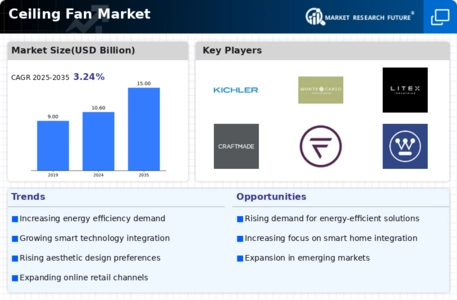
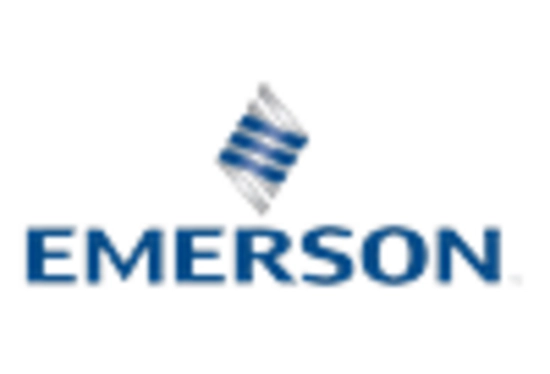
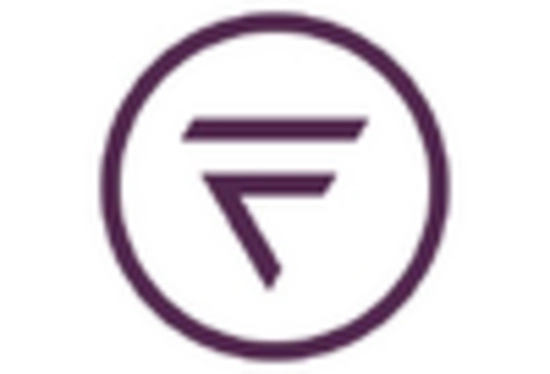
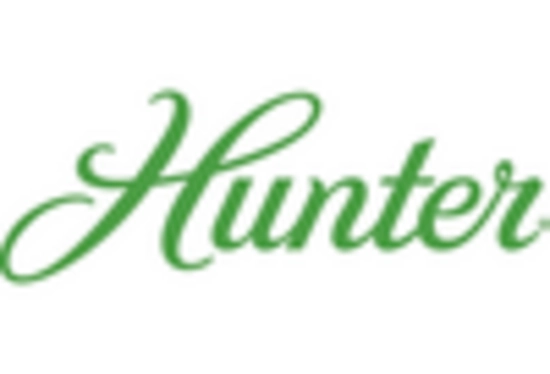
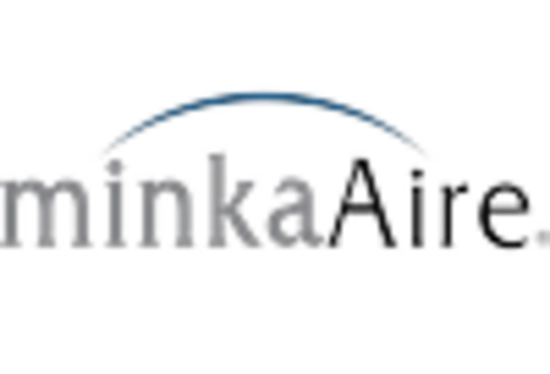
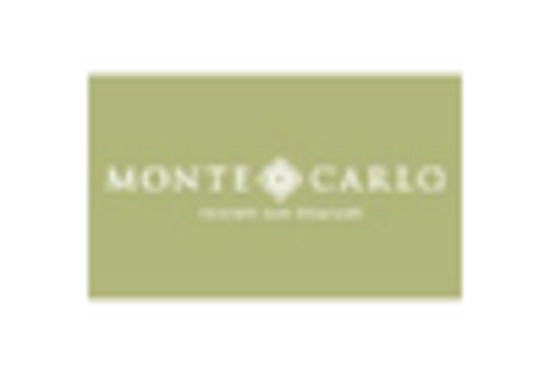
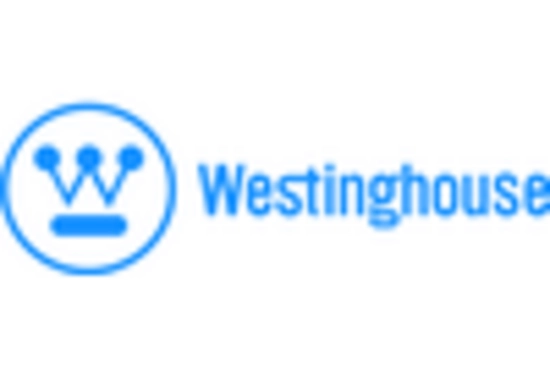

Leave a Comment